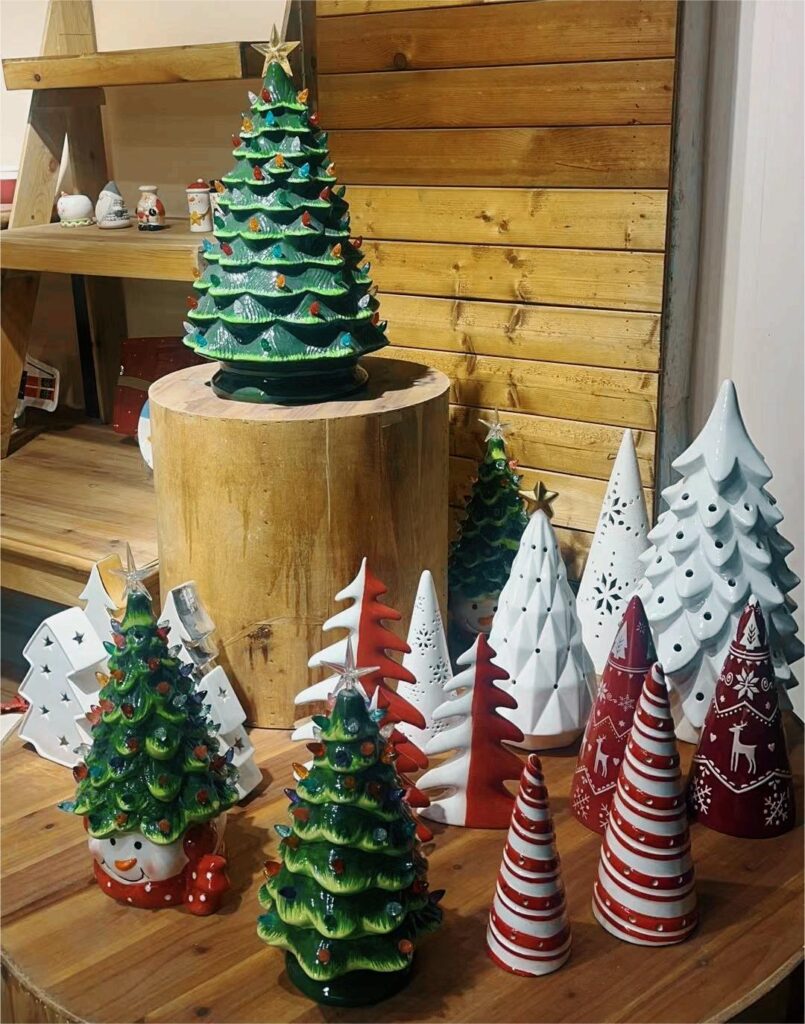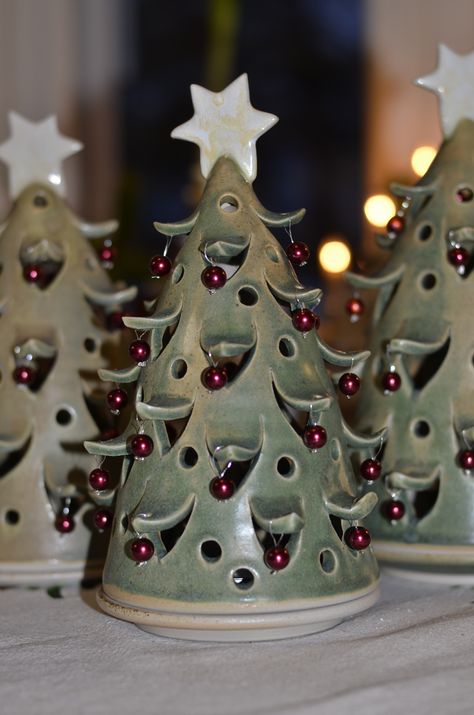

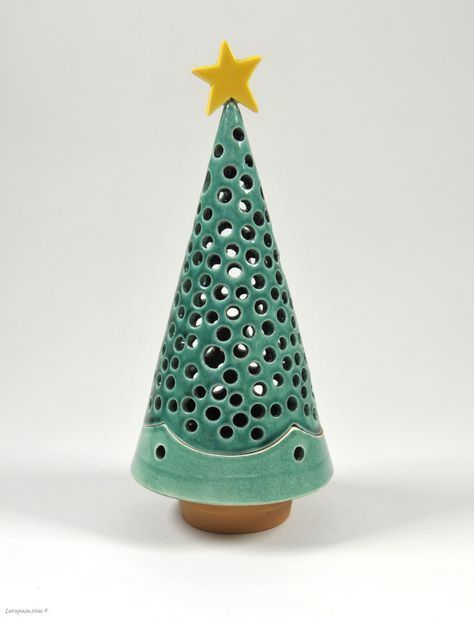
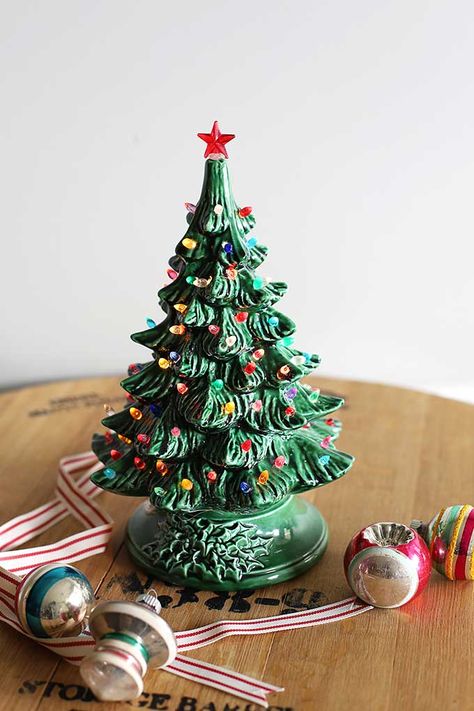


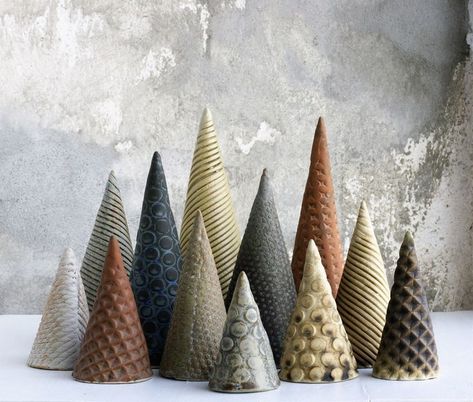

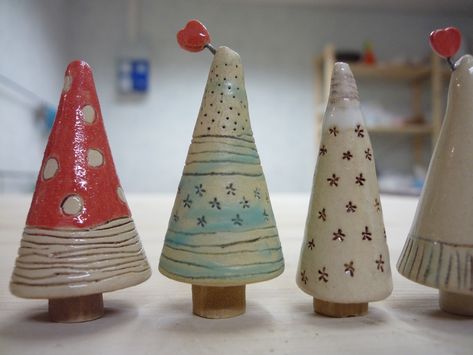
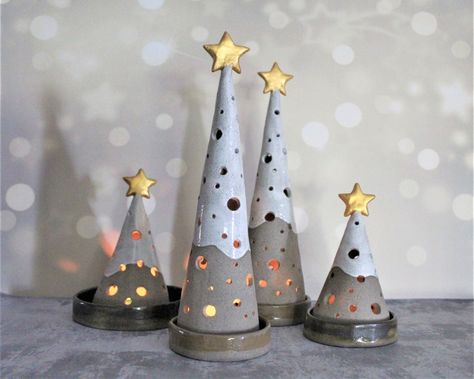

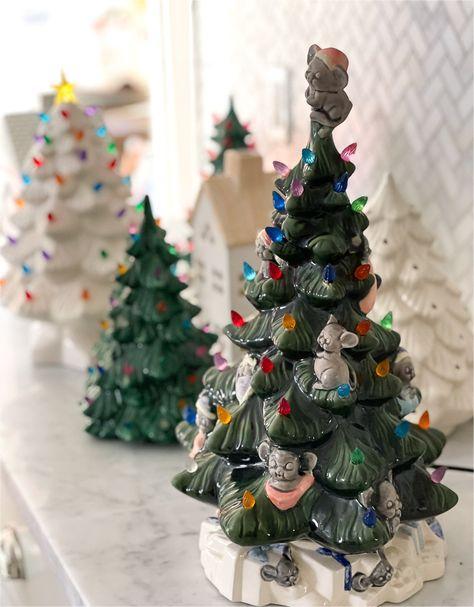
While my choice of tree is dictated by space, there are other reasons that people seek alternatives to real Christmas trees. Plastic is a material commonly used today, but in the 1960s and 1970s, tabletop ceramic Christmas trees were all the rage.
If you have parents or grandparents of a certain age, chances are you’ve seen one of these iconic trees in their home. Ceramic Christmas trees first started showing up in the 1940s. The original trees were handcrafted by private artists on a small scale and sometimes featured tiny electric bulbs that lit individually. In the following decades, advancements in mold-making techniques led many ceramic mold companies to develop molds based on the Christmas tree design.
Development of these molds coincided with certain events favoring the adoption of ceramic Christmas trees. In an interview with author Sarah Archer, who published a book on the invention of modern-day Christmas celebrations, she explains that do-it-yourself Christmas projects started with the Great Depression in the 1930s. These traditions carried well into the 1950s and 1960s, despite the abundance following World War II. This interest in do-it-yourself projects, along with an explosion of Christmas consumerism and a retreat into traditional gender roles following the war, positioned the ceramic Christmas trees perfectly for adoption.
In the 1960s and 1970s, crafts shops would offer workshops where people would create their own ceramic Christmas trees using the mass-produced molds. In addition, advancements in plastics and lighting led to the replacement of individually lit bulbs with one light bulb that lit the entire tree’s colorful plastic bulbs from within.
Ceramic Christmas trees began going out of style in the 1980s, and by the 1990s, the influx of ready-made ceramics from Japan and China sealed their fate. The video below shows how companies mass produce ceramic Christmas trees today.
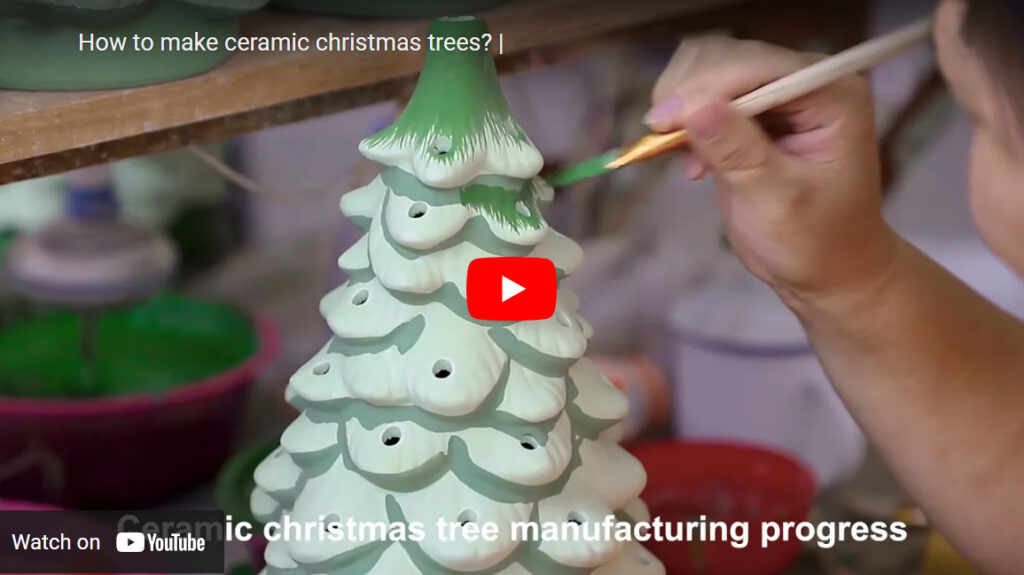
Most of the production of Christmas tree products is achieved by manual, so it is a test of the proficiency of workers, workers who have done for a long time, can make a more exquisite Christmas tree, and the speed is faster than the unskilled workers, the price is cheaper.
